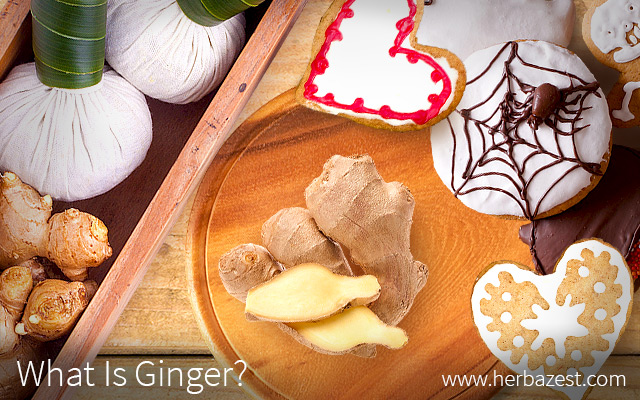Ginger is a tropical plant whose rhizome (popularly known as ginger root) is used most commonly for culinary and medicinal purposes. Gnarled and knotted in appearance, the ginger root has a slightly pungent, spicy-sweet flavor and aroma.
But to truly understand what ginger is, it is necessary to trace its origins, history, and traditional uses. In that way, you'll discover all the interesting and practical uses of this herb.
About Ginger's Origins
Ginger is an herb native to Asia, where it has been used in cooking for the past 4,400 years, and as an herbal medicine for at least the past 2,000 years. Ginger originated specifically in southern, tropical China and from there spread to the Spice Islands, other parts of Asia, West Africa, India, and the Caribbean.
The ginger root was an incredible article of trade. Exported mostly from India, it was highly valued by Romans for its medicinal properties and continued to be highly sought in Europe after the fall of the Roman Empire. By Medieval times, ginger was heavily imported to Europe in a preserved form to be used in sweets.
The creation of the gingerbread man has been credited to Queen Elizabeth I of England.
Traditional Uses of Ginger
Historically, Zingiber officinalis rhizome has been used for culinary purposes, as a flavoring agent, but the medicinal uses of ginger root can be traced back to China, 2,000 years ago, where it was commonly prescribed for treatment of gastrointestinal issues, the common cold, and ailments that reflect flu-like symptoms. In fact, ginger health benefits have made it a famed herb in traditional and folk medicine.
About the Ginger Plant
Ginger is a member of the Zingiberaceae family, which also includes turmeric and cardamom. Botanically named Zingiber officinale, ginger has characteristic green-purple flowers and a thick, knotted underground stem or rhizome also known as root, although the real roots grow as extensions of the rhizome. The ginger rhizome is beige on the outside and yellow within, exhibiting a sweet-spicy aroma, while the stem grows up about 12 inches (30 cm) above ground and is characterized by long, narrow, green leaves.
There are many different varieties of ginger, and ginger products will vary considerably depending on their origin and the species used. For example, Japanese ginger tends to lack the typical aroma, while Chinese ginger is best suited for use in desserts.
The ginger rhizome or "root,” is the most commonly used and commercialized part of the plant.
Ginger Names
Ginger's scientific name, Zingiber officinale, has Latin origins. The present-day name ginger originates from the Middle English term gingivere, meaning 'horn root', same as its original name in Sanskrit, srngaveram, likely due to the knotty appearance of the plant's underground stem (rhizome) and root. The Greek word for ginger is ziggiberis, while in Latin it appears as zinziberi.
Ginger Nowadays
Today, there are many uses ginger is good for. Although eating fresh, raw ginger still one of the most popular ways of consumption, the use of powdered or ground ginger is not only preferred for culinary applications but also for making ginger supplements, such as ginger root capsules and ginger tablets. Additionally, ginger can be found preserved, candied, and crystallized. While the use of natural and alternative medicines has grown greatly in recent years, so has the interest in ginger as a complementary and alternative herbal remedy. As such, much research has been performed that has confirmed many of ginger properties.
However, while many of the uses of ginger are medicinal, it should be noted that this herb is one of the most commonly-used condiments around the world and is often sought after solely for its distinctive flavor and aroma, which are considered essential in many Asian dishes. But besides its culinary and medicinal uses, certain varieties of ginger have even been cultivated and harvested for their appearance, and their flowers used in bouquets and arrangements.
So what is ginger, exactly? The answer to that question is long and diverse. The essential definition of ginger has changed throughout history and varies depending on the part of the world in which ginger is used. For that reason, it can be said that ginger is many things: a super-herb with culinary, medicinal, and ornamental properties, a staple product in many cultures, and a valuable, historical export.
Sources
- Herbal Medicine: Biomolecular and Clinical Aspects, Chapter 7 The Amazing and Mighty Ginger
- National Institutes of Health, Ginger
- Royal Botanic Garden Edinburgh, Zingiberaceae
- University of California, Ginger
- Medicinal Plants of the World, p. 349
- University of Maryland Medical Center, Ginger




